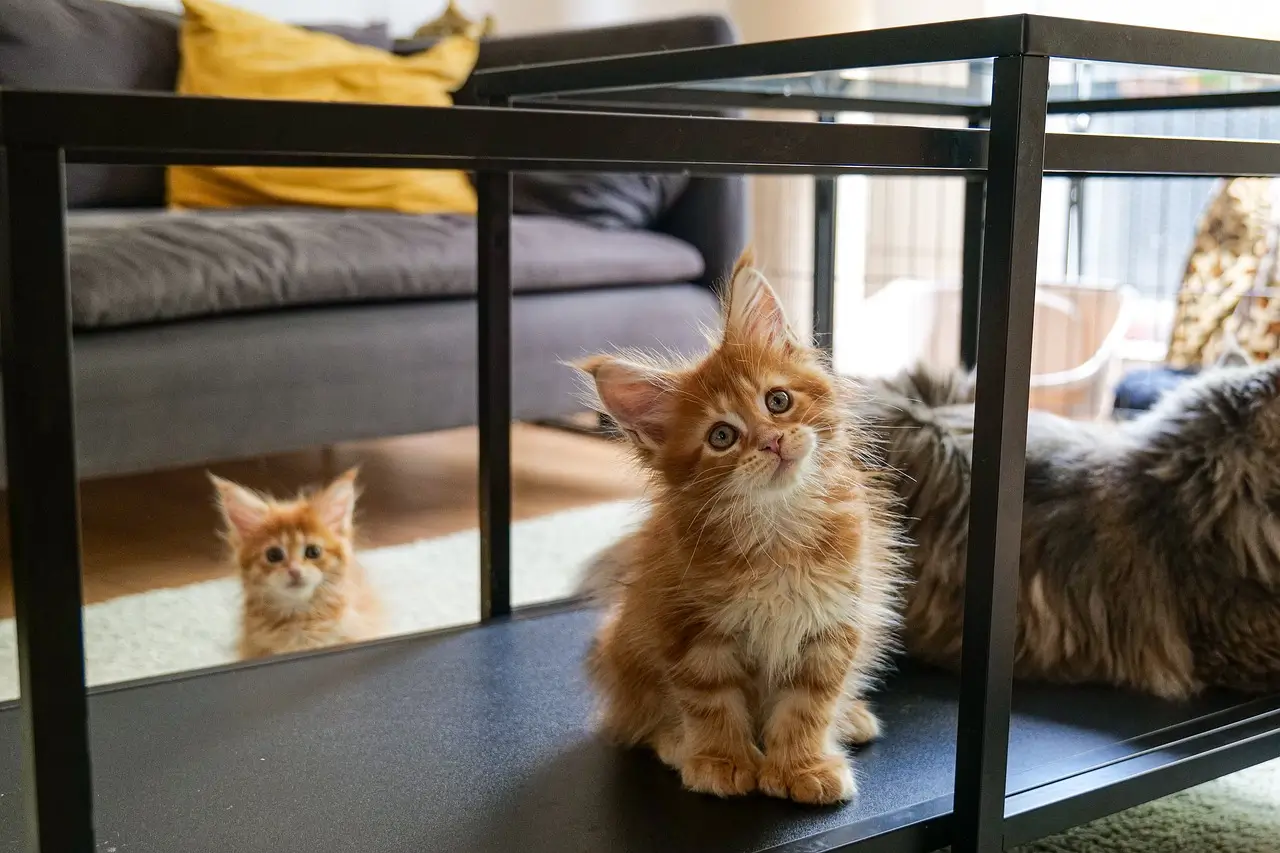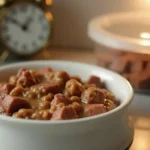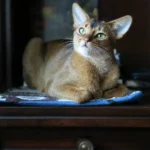The Maine Coon is one of the most popular and beloved cat breeds in the world, known for its impressive size, striking appearance, and affectionate, friendly temperament. Often referred to as “gentle giants,” Maine Coons are not only admired for their playful nature and loyalty to their owners, but also for their majestic, bushy tails and tufted ears. These cats are highly intelligent, making them easy to train and interactive companions.
But it’s not just their size or personality that sets them apart. The Maine Coon’s coat is equally captivating, with a wide variety of stunning colors and patterns that make each one truly unique. In this article, we’ll dive into 9 Maine Coon cat colors and patterns you won’t believe exist. From classic tabby patterns to rare and exotic colorations like tortoiseshell and silver, we’ll explore the beauty and complexity of these feline coats.
Understanding these color variations isn’t just about appreciating their aesthetic appeal—it’s also rooted in the fascinating world of feline genetics and the history of Maine Coon breeding. By the end of this article, you’ll have a deeper appreciation for the genetic factors that make Maine Coon cats so diverse and mesmerizing. Let’s explore these stunning colors and patterns together!
Table of Contents
Classic Maine Coon Cat Colors and Patterns
Maine Coon cats are renowned for their stunning coats, which come in a variety of colors and patterns. Among the most common and beloved of these are the classic patterns that define the breed’s distinctive look. Whether you’re admiring the timeless tabby or the bold, solid colors, each pattern offers its own charm and uniqueness. Let’s explore some of the most iconic Maine Coon colors and patterns.
1. Tabby Maine Coon: The Timeless Stripes and Swirls
The tabby pattern is the most common and instantly recognizable among Maine Coon cats. It’s characterized by distinctive markings, such as stripes, spots, and swirls, that run across the body and legs, making these cats appear both regal and wild. The tabby pattern can be found in several variations, each adding its own flair to the breed’s look:
- Classic Tabby: This pattern features bold, swirling stripes that often resemble a marble-like effect. The “bull’s-eye” shape on the sides is a trademark feature of the classic tabby.
- Mackerel Tabby: Recognized by narrow, parallel stripes running down the body, the mackerel tabby resembles the pattern of a fish’s skeleton. It’s often referred to as the “tiger stripe” pattern due to its striking appearance.
- Spotted Tabby: A variation where spots replace stripes, giving the cat a more dotted appearance. These spots can be small or large, and the pattern can appear almost like a leopard’s coat.
Within the tabby pattern, there are several common color variations:
- Brown Tabby: The most common, featuring shades of dark brown with black stripes.
- Silver Tabby: This version has a pale, shimmering base coat with darker stripes, creating a beautiful contrast.
- Red Tabby: A rarer variant that showcases shades of orange and red with darker stripes.
2. Solid Black Maine Coon: Bold and Majestic
The solid black Maine Coon is one of the most striking and rare colorations within the breed. These cats boast sleek, shiny fur that gives them a majestic, almost regal appearance. Unlike the tabby pattern, a solid black Maine Coon lacks any markings or stripes, with their deep, uniform black color extending all over their body, tail, and face.
While black Maine Coons may appear simple compared to their patterned counterparts, their striking, solid coat creates a bold and dramatic visual impact. These cats are often seen as more mysterious and elegant due to their monochrome look. The solid black coloration in Maine Coons is caused by a recessive gene that suppresses the tabby pattern, resulting in a clean, deep black coat.
3. Solid Red Maine Coon: A Stunning Orange Hue
The solid red (orange) Maine Coon is another rare and vibrant color variation. These cats are immediately recognizable for their striking, warm orange or red coats. The color can range from a deep, fiery red to a lighter, almost golden hue, but what makes them particularly stunning is their uniformity—there are no stripes or patterns, just pure, bold color.
Solid red Maine Coons are relatively rare compared to other colorations because the gene responsible for the red coloring is recessive. This means that two parents must carry the gene for red coloration in order for their kittens to inherit it. The genetics behind the red color in Maine Coons are tied to the “O” gene, which is responsible for red fur in cats. Interestingly, the red color in male cats is much more common, as they only need one copy of the red gene, while females require two copies to express the red coloration.
4. Bicolor Maine Coon: A Beautiful Mix
A bicolor Maine Coon is defined by its two-tone coloration, usually consisting of white fur combined with another color such as black, red, or cream. This pattern creates a stunning contrast between the white areas (typically around the chest, paws, and underside) and the darker or more colorful areas on the rest of the body.
Bicolor Maine Coons are visually striking due to their clean, symmetrical patterns and the stark contrast between the two colors. They often appear as if they are wearing a “coat” of one color, with their underside and legs remaining white, giving them a refined, elegant look.
The genetics behind the bicolor pattern are tied to a specific gene that determines the white areas on a cat’s coat. The color and distribution of the non-white parts are largely determined by the other color genes inherited from the parents, which can include black, red, cream, or any of the other solid colors found in Maine Coons.
Rare and Exotic Maine Coon Colorations
While the classic Maine Coon colors and patterns are stunning in their own right, some of the rare and exotic colorations take the breed’s beauty to a whole new level. These Maine Coon cats boast unique coats with mesmerizing shades and intricate patterns that make them even more enchanting. From the vibrant patchwork of the tortoiseshell to the shimmering elegance of the silver Maine Coon, let’s dive into some of the more extraordinary color variations.
5. Tortoiseshell Maine Coon: A Patchwork of Rich Colors
The tortoiseshell Maine Coon is a true masterpiece of color, combining a beautiful mix of black, orange, and cream in a patchwork pattern. These cats are often referred to as “torties,” and their coats feature bold, irregular patches of color that make each one entirely unique. The tortoiseshell pattern can be quite striking, with deep black contrasting against the vibrant orange and pale cream tones.
Interestingly, tortoiseshell Maine Coons are almost always female, due to the genetics behind their coloration. The genes responsible for the orange and black fur are carried on the X chromosome. Since females have two X chromosomes (XX), they are capable of carrying both the black and orange genes, which results in the tortoiseshell pattern. Male cats, having only one X chromosome (XY), usually cannot inherit both colors, making tortoiseshell males extremely rare.
The rare beauty of tortoiseshell Maine Coons is undeniable, and they are highly sought after for their unique, multi-colored coats that stand out among other breeds.
6. Silver Maine Coon: A Glimmering, Shimmering Coat
The silver Maine Coon is one of the most enchanting variations, with its shimmering coat that seems to glisten in the light. These cats have a base coat of pale silver or white, accented by darker tips of color, creating a striking contrast. The silver fur gives the Maine Coon an almost ethereal quality, making them look like royalty among cats.
There are a few variations within the silver category:
- Shaded Silver: This variation features a lighter, almost frosted silver coat with darker shading on the back, sides, and tail, giving the cat a soft, shaded appearance.
- Smoke Silver: Smoke silver Maine Coons have a silvery undercoat, but their fur tips are darker, which creates a dramatic, smoky effect when they move.
The genetic mutation that causes the silver coloration in Maine Coons is a dominant gene. This mutation causes the base coat to be diluted to a silver hue, with the darker coloring on the tips of the fur adding depth and dimension to the coat.
7. White Maine Coon: Pure Elegance
The white Maine Coon is a rare and truly majestic color. With its snow-white fur, this variation is one of the most sought-after in the breed. These cats are incredibly striking, with their long, flowing coat that exudes purity and grace. White Maine Coons are often associated with elegance and are often seen as particularly noble-looking.
One of the most common traits of white Maine Coons is their bright, vivid eye color. Most white Maine Coons have blue or green eyes, which adds to their captivating and regal appearance. In some cases, white Maine Coons may even have one eye of each color, a condition known as heterochromia, which makes them even more distinctive.
The inheritance of the white fur in Maine Coons is controlled by a recessive gene, which means that both parents must carry the gene for their kittens to be born with this striking white coat. Because of this, white Maine Coons are relatively rare compared to other colorations.
8. Cream Maine Coon: Soft and Subtle Beauty
The cream Maine Coon is a gentle and soft-colored version of the breed, with a coat that’s typically pale, pastel yellow or light tan. The cream coloration provides a subtle, calming appearance that’s a bit more understated than some of the bolder Maine Coon colors. It’s often described as having a warm, almost buttery look, which is perfect for those who appreciate a more delicate palette.
The cream coloration is a result of the dilution of the red (orange) gene. Red is typically a vibrant, bold color, but when it’s diluted, it creates the softer, more muted hues seen in cream Maine Coons. This dilution gene reduces the intensity of the red, producing a pastel-like appearance that’s both elegant and soft.
Due to the dilution of red fur, cream Maine Coons are a bit rarer than their bolder, red or orange counterparts, making them a special find for cat lovers who adore subtlety and refinement.
9. Dilute Maine Coon: Muted and Gentle Hues
A dilute Maine Coon is one whose coat colors have been softened and muted due to genetic dilution. These cats often feature blue (gray), lilac, and cream hues, which give them a uniquely gentle and elegant appearance. Diluted Maine Coons can come in a range of colors, but the most common diluted shades are pastel and muted tones of the more vivid base colors.
- Blue (Gray): A diluted form of black, these cats have a soft, powdery blue-gray coat.
- Lilac: A diluted version of chocolate or lavender, lilac Maine Coons have a pale, cool-toned coat that can appear almost silvery.
- Diluted Cream: A soft, pastel version of the classic cream Maine Coon, often with a cooler, almost silver undertone.
The genetics behind dilution involve recessive genes that alter the intensity of color pigments. This dilution results in softer, more pastel-like shades that are highly prized by those who prefer a quieter, more subtle color scheme. Dilute Maine Coons have a serene and gentle beauty, making them ideal for cat lovers who appreciate understated elegance.
The Genetics Behind Maine Coon Colors and Patterns
The stunning array of colors and patterns found in Maine Coon cats is not just a matter of chance; it’s rooted in the fascinating science of genetics. The variety of coat colors and patterns we see today in Maine Coons is a result of centuries of natural selection, crossbreeding, and careful genetic management. In this section, we’ll explore the genetic principles that shape these beautiful felines and how selective breeding has influenced the Maine Coon’s stunning diversity.
1. How Coat Colors Are Determined in Maine Coons
Feline genetics is complex, but understanding a few basic principles can shed light on how Maine Coon cats inherit their distinct coat colors and patterns. Like all cats, Maine Coons inherit their coat color from their parents through a combination of dominant and recessive genes.
- Dominant and Recessive Genes: Each cat inherits two copies of each gene—one from each parent. A dominant gene only needs one copy to express the trait, while a recessive gene requires two copies for the trait to show. For example, the gene for a solid black coat is dominant, while the gene for a tabby pattern is recessive, meaning a cat must inherit two copies of the tabby gene to display the tabby pattern.
- The Role of the X Chromosome: In Maine Coons, color patterns like tortoiseshell and calico are linked to the X chromosome. Female cats have two X chromosomes, allowing them to inherit and express both the black and orange color genes, which creates the tortoiseshell pattern. Male cats, however, only have one X chromosome, so they can only inherit one of those colors—either black or orange—making tortoiseshell males exceedingly rare.
Breeders use knowledge of these genetic principles to predict which colors and patterns will appear in a litter of kittens. By selecting specific breeding pairs, breeders can increase the likelihood of producing certain color outcomes, especially in desirable or rare patterns.
2. Genetic Mutations That Cause Rare Maine Coon Colors
Some of the most stunning colors and patterns in Maine Coon cats are the result of genetic mutations that affect the fur’s appearance. These mutations are often the key to rarer colors like silver, tortoiseshell, and white, and they contribute to the breed’s incredible variety.
- The Silver Gene: The silver coloration in Maine Coons is caused by a specific genetic mutation that dilutes the coat color. This gene is dominant, meaning that even one copy of the silver gene can cause the cat to develop a shimmering, silver coat. Silver Maine Coons have a light base coat with darker tips, creating the dramatic contrast that makes them so distinctive.
- Tortoiseshell and Calico Genes: The tortoiseshell pattern is a result of the interaction between the black and orange genes on the X chromosome. This makes tortoiseshells primarily female, as males cannot typically inherit both of these color genes. Calico cats have similar color patterns, but with more white mixed in, creating a tricolored look. These colorations can be harder to produce due to the complexity of the X chromosome’s genetic influence.
- The White Gene: White Maine Coons owe their pristine coats to a recessive gene that causes the absence of any pigment in the fur. Both parents must carry this recessive gene for their kittens to inherit the white coat. White Maine Coons are rare, and it’s even more uncommon to find them with unique eye colors such as blue or green.
- Other Mutations: Maine Coons can also carry other mutations that influence coat texture and color. The agouti gene controls whether a cat’s fur has distinct banding or a solid color, and the dilution gene can lighten black or orange colors, creating blue (gray) or cream variations in the fur.
3. Understanding the Impact of Selective Breeding
Selective breeding plays a significant role in the development of different coat colors and patterns in Maine Coons. Over the years, breeders have selectively bred Maine Coons to enhance specific traits, including the appearance of their coats. However, the practice of selective breeding also raises ethical concerns and challenges.
- Selecting for Specific Colors and Patterns: Breeders often select mating pairs based on their color genetics in order to produce specific coat types. For instance, if a breeder wants to produce kittens with a tortoiseshell pattern, they will choose two female cats that carry the tortoiseshell gene. Similarly, to produce rare colors like silver or solid red, breeders carefully pair cats with the appropriate genetic makeup.
- Ethical Considerations: While selective breeding has allowed breeders to produce a wider variety of Maine Coon colors, it has also raised concerns about the genetic health of the cats. Overbreeding certain traits can lead to an increased risk of hereditary health problems. As a result, responsible breeders strive to maintain a balance between producing beautiful kittens and ensuring the overall health and well-being of the cats.
- Contributing to Diversity: Selective breeding has greatly expanded the range of coat colors in Maine Coons, contributing to the diversity we see today. By carefully managing genetics, breeders have been able to cultivate some of the rare and stunning colorations, making Maine Coons even more enchanting to cat lovers around the world.
4. Maine Coon Color Chart: The Standards and Rarity
Cat breed organizations like TICA (The International Cat Association) and the CFA (Cat Fanciers’ Association) have established color charts that define the breed standards for Maine Coons. These standards outline the acceptable coat colors, patterns, and markings for Maine Coons that meet the official criteria for showing and recognition.
- The Official Color Chart: The Maine Coon color chart is an extensive guide to the breed’s acceptable colors and patterns, ranging from tabby variations to solid and bicolor cats. The chart also includes rare colorations like silver and tortoiseshell, noting which colors are most commonly seen in the breed and which are considered rarer.
- How Breed Standards Influence Desirability: The breed standards established by organizations like TICA and CFA influence which colors and patterns are most desirable among breeders and enthusiasts. While there is a lot of room for variation, certain colors may be considered more “ideal” according to these standards, influencing breeding practices. For example, silver and solid black Maine Coons are considered highly desirable, while white Maine Coons, though rare, are also much sought after.
- Challenges of Standardizing Colors: One of the challenges in standardizing Maine Coon colors is the breed’s genetic complexity. With such a wide range of color possibilities, it can be difficult to establish strict guidelines that account for every variation. The Maine Coon’s diverse color palette is part of what makes the breed so beloved, but it also creates challenges for breeders trying to produce specific outcomes while maintaining breed health and standards.
Conclusion
Maine Coon cats are truly a marvel of nature, not only for their impressive size and affectionate nature but also for their stunning array of colors and patterns. From the timeless tabby to the rare tortoiseshell, silver, and even white, the Maine Coon offers a rich palette of hues that makes every cat unique. Whether it’s the bold stripes of a classic tabby or the soft, pastel tones of a cream Maine Coon, the variety within the breed is a testament to the complexity and beauty of feline genetics.
This wide range of colors and patterns is one of the many reasons the Maine Coon is such a beloved breed worldwide. Each cat is a living work of art, with no two coats being exactly alike. The diversity in their appearance allows prospective owners to find a Maine Coon that suits their personal preferences, while also ensuring that the breed’s stunning beauty never grows old or predictable.
Whether you’re considering adopting a Maine Coon or simply fascinated by this magnificent breed, take a moment to appreciate the incredible diversity of colors and patterns that make these cats so special. Their unique coats, along with their endearing personalities, continue to capture the hearts of cat lovers everywhere. So, whether you’re drawn to the shimmering silver, the fiery red, or the elegant bicolor, there’s no denying that the Maine Coon’s remarkable variety will always leave you in awe.
Frequently Asked Questions (FAQs)
1. What are the most common colors of Maine Coon cats?
The most common colors of Maine Coon cats include tabby patterns (such as classic, mackerel, and spotted) in colors like brown, silver, and red. Solid colors such as black, red, and cream are also relatively common. Bicolor Maine Coons, featuring a mix of white and another color, are also popular.
2. Are there any rare Maine Coon colors?
Yes, there are several rare Maine Coon colors, including tortoiseshell, silver, white, and dilute colors like blue (gray) and lilac. These colorations can be harder to find, especially in specific patterns like solid red or tortoiseshell, as they are influenced by recessive genes or mutations that require both parents to carry the traits.
3. How do breeders predict the coat color of a Maine Coon kitten?
Breeders predict coat color based on feline genetics, specifically the combination of dominant and recessive genes. By understanding which genes each parent carries (such as the tabby, dilution, or agouti genes), breeders can estimate the likelihood of certain color patterns appearing in a litter. Selective breeding can help ensure certain colors and patterns are passed down, though some rare colors, like tortoiseshell or solid red, can be more difficult to produce.






